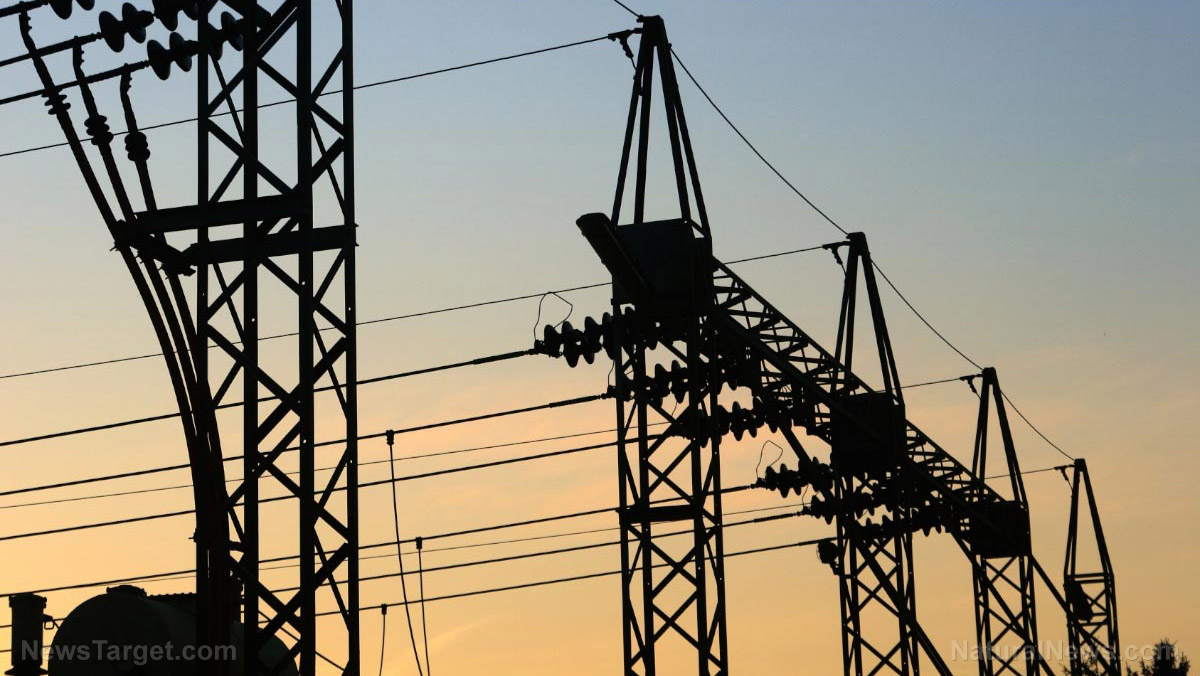New South Wales initiates trial of smart technology on regional highways
01/17/2025 / By Arsenio Toledo

- The New South Wales government has initiated a trial to enhance road safety on regional highways using advanced smart technologies, including solar-powered, wireless systems and machine-learning-enabled tools.
- The trial focuses on four technologies: SHAVES (hazard detection signs), permanent traffic counters, RIAWS (intersection warning systems), and radar-traffic signal integration for managing steep inclines.
- The program targets regional areas, where road fatalities are disproportionately high, by providing real-time hazard warnings, adaptive traffic management, and safer driving conditions.
- Beyond reducing accidents, the initiative aims to improve safety for road crews and emergency workers by minimizing their exposure to live traffic during maintenance and emergencies.
- While smart highways offer significant benefits, challenges such as driver confusion, system failures, and cybersecurity risks remain. The trial aligns with global trends, offering insights for adapting these technologies to Australia’s unique conditions.
In a bid to reduce road fatalities and improve driver safety, the government of the Australian state of New South Wales has committed to a trial using cutting-edge smart technology on regional highways.
The AU$5 million ($3.1 million) trial, announced on Jan. 14, aims to harness solar-powered, wireless systems to detect hazards, manage traffic and encourage safer driving behaviors. The program, dubbed “Smarter Highways,” will deploy machine-learning-enabled electronic signs, permanent traffic counters and variable speed limit systems to address risks such as bushfires, black ice and wildlife crossings.
The announcement comes as NSW grapples with rising concerns over road safety, particularly in regional areas where driving is often the only viable mode of transportation. According to Minister for Regional Transport and Roads Jenny Aitchison, the technology’s primary goal is to “effect behavioral change and reduce risky driving actions” that contribute to accidents.
“Outside of the cities, driving is often the only available form of transport, and sometimes there are no alternative routes, so we need to make those journeys safer,” Aitchison said.
The Smarter Highways program is part of a broader push by Australian states to integrate smart technology into road networks. Similar initiatives have been rolled out in Western Australia, South Australia and Victoria, reflecting a nationwide trend toward leveraging smart technology to enhance road safety and efficiency. (Related: Automotive journalist reveals how smart technologies in modern vehicles cost you privacy and control.)
How New South Wales’ smart highways work
The trials will focus on four key technologies. The first is SHAVES, or Smarter Highway Activated Vehicle and Environmental Systems.
These self-adaptive electronic signs use machine learning to predict hazards like black ice, smoke, or wildlife. They replace traditional portable signs, reducing the need for maintenance crews to manually deploy warnings. The solar-powered system includes prism signs, variable message screens and flashing lights, all connected via IoT for real-time updates.
The second technology is permanent traffic counters. NSW has installed low-cost, solar-powered devices that provide real-time data on vehicle volumes, speeds, road temperatures and system health. They are particularly useful during peak travel periods, natural disasters, or seasonal events like harvests.
The third tech is RIAWS, or Rural Intersection Activated Warning System. This system uses sensors to detect vehicles approaching high-speed main roads from side roads. It triggers variable speed limit signs to slow down main road traffic, creating safer gaps for merging vehicles.
The last technology is the combined use of radar and traffic signals to manage traffic flow on steep inclines like Victoria Pass in the Blue Mountains, where breakdowns often cause congestion during peak periods.
Road safety remains a pressing issue in Australia, with regional areas disproportionately affected by fatalities and injuries. According to Australia’s federal Bureau of Infrastructure, Transport and Regional Economics, regional roads account for nearly two-thirds of road deaths despite hosting only one-third of the population.
The Smarter Highways initiative seeks to address this disparity by providing real-time hazard warnings and adaptive traffic management, reducing the need for emergency interventions and improving overall road resilience.
The program also aims to enhance safety for road crews and emergency workers by minimizing their exposure to live traffic.
“Key to these innovations is improving safety for road crews by reducing the risks of carrying out works near traffic,” Aitchison said.
While smart highways offer significant benefits, they are not without challenges. Rapidly changing speed limits and lane configurations can confuse drivers, and over-reliance on technology raises concerns about system failures or cyberattacks. Similar systems in the United States, Europe and Asia have faced criticism for these issues, highlighting the need for robust safeguards and public education.
Globally, smart highways are gaining traction as governments seek to modernize infrastructure. Countries like the Netherlands, Sweden and the U.S. have implemented similar technologies, with mixed results. NSW’s trial will provide valuable insights into how these systems can be adapted to Australia’s unique geography and climate.
Watch this clip discussing how artificial intelligence-powered smart technology is harming humanity.
This video is from the channel The Prisoner on Brighteon.com.
More related stories:
Not a smart move: Australia’s Queensland state is now rationing electricity using smart meters.
Resolving traffic problems with smart tech: Could driverless cars speed up traffic?
Sources include:
Submit a correction >>
Tagged Under:
Australia, future tech, highways, New South Wales, regional highways, roads, smart highways, smart meters, smart roads, smart streets, smart technology, Smarter Highways, technology, transportation
This article may contain statements that reflect the opinion of the author
RECENT NEWS & ARTICLES
COPYRIGHT © 2017 FUTURETECH.NEWS
All content posted on this site is protected under Free Speech. FutureTech.news is not responsible for content written by contributing authors. The information on this site is provided for educational and entertainment purposes only. It is not intended as a substitute for professional advice of any kind. FutureTech.news assumes no responsibility for the use or misuse of this material. All trademarks, registered trademarks and service marks mentioned on this site are the property of their respective owners.


















